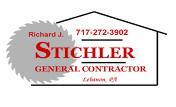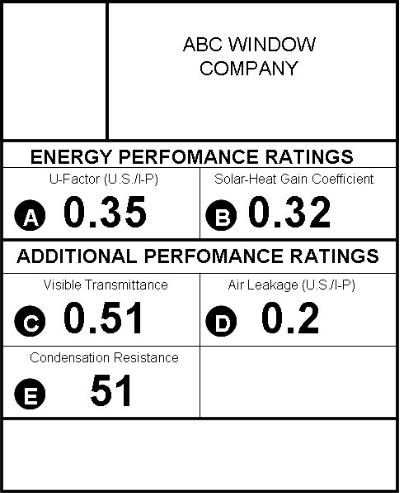Window Ratings
RICHARD J. STICHLER GENERAL CONTRACTOR
Lebanon, PA 17046
If you can dream it, we can build it!
Remodeling, Custom Building, Complete Home Improvements, Custom Cabinetry
WE ARE CERTIFIED
CERTAINTEED
WINDOW MASTER
CRAFTSMEN!
|
WINDOWS
DOORS
SIDING
ROOFING
ADDITIONS
TRIM WORK
PAINT
WALLPAPER
CABINETRY
CONCRETE
DECKS
FENCES
ELECTRICAL
PLUMBING
YOU NAME IT!
|
Understanding the National Fenestration Rating
Council (NFRC) Label.
|
The NFRC sets the standards for every door
and window produced. This guide is intended
to help you understand what the ratings mean.
|
U-Factor measures how well a product prevents heat from
escaping a home, taking into account airflow around the window and
emissivity of the glass. U-Factor ratings generally fall between 0.20
and 1.20. The lower the U-Factor, the better a product is at
keeping heat in. U-Factor is particularly important during the winter
heating season.
Solar Heat Gain Coefficient (SHGC) measures how well a product
blocks heat from the sun. SHGC is expressed as a number
between 0 and 1. The lower the SHGC, the better a product is at
blocking unwanted heat gain. Blocking solar heat gain is particularly
important during the summer cooling season.
Visible Transmittance (VT) measures how much light comes
through a product. VT is expressed as a number between 0 and 1.
The higher the VT, the higher the potential for daylighting.
Air Leakage (AL) measures how much outside air comes into a
home through a product. AL rates typically fall in a range between
0.1 and 0.3. The lower the AL, the better a product is at keeping
air out. AL is an optional rating, and manufacturers can choose not
to include it on their labels.
Condensation Resistance (CR) measures how well a product
resists the formation of condensation. CR is expressed as a
number between 1 and 100. The higher the number, the better a
product is able to resist condensation. CR is an optional rating, and
manufacturers can choose not to include it on their NFRC labels.









